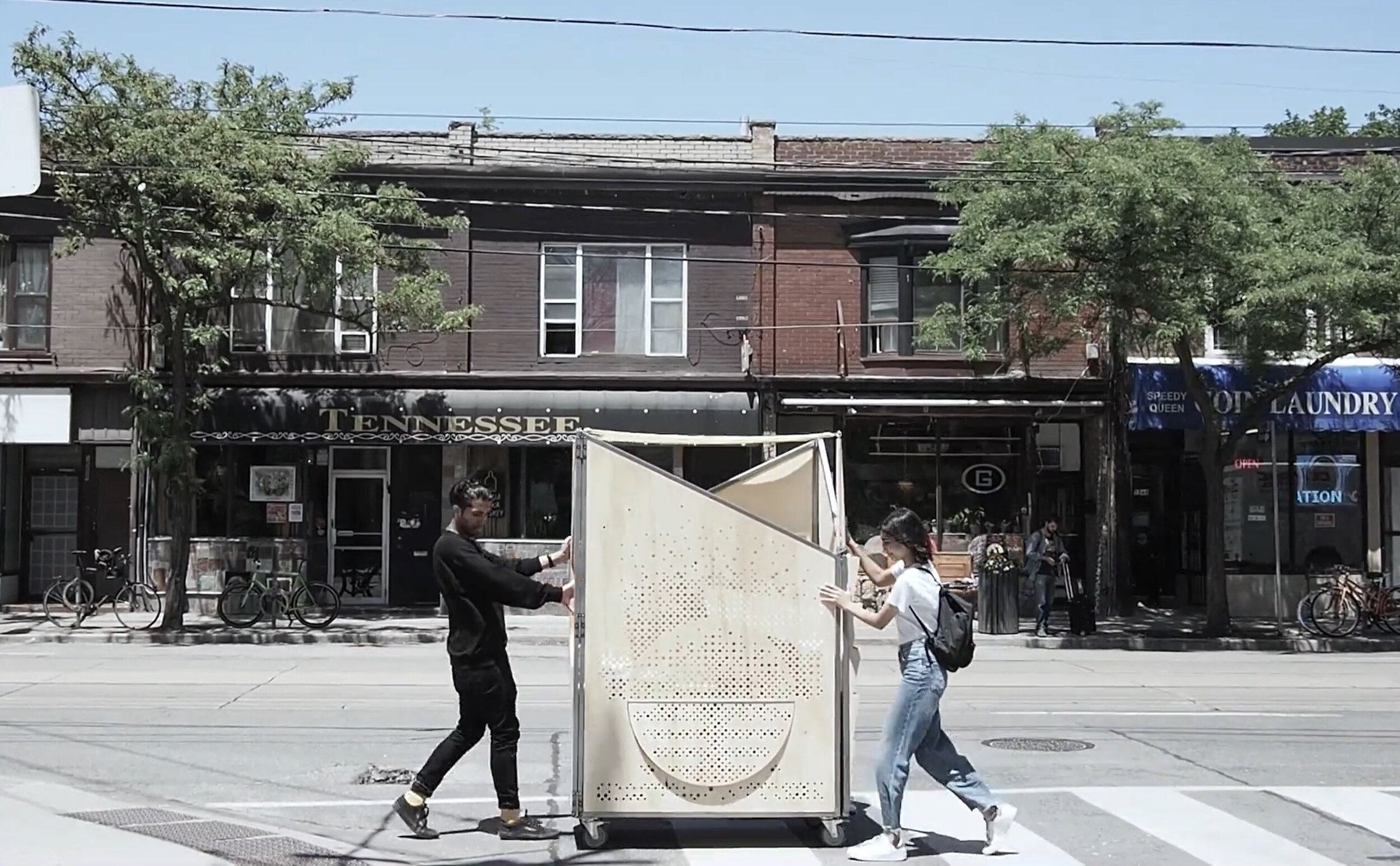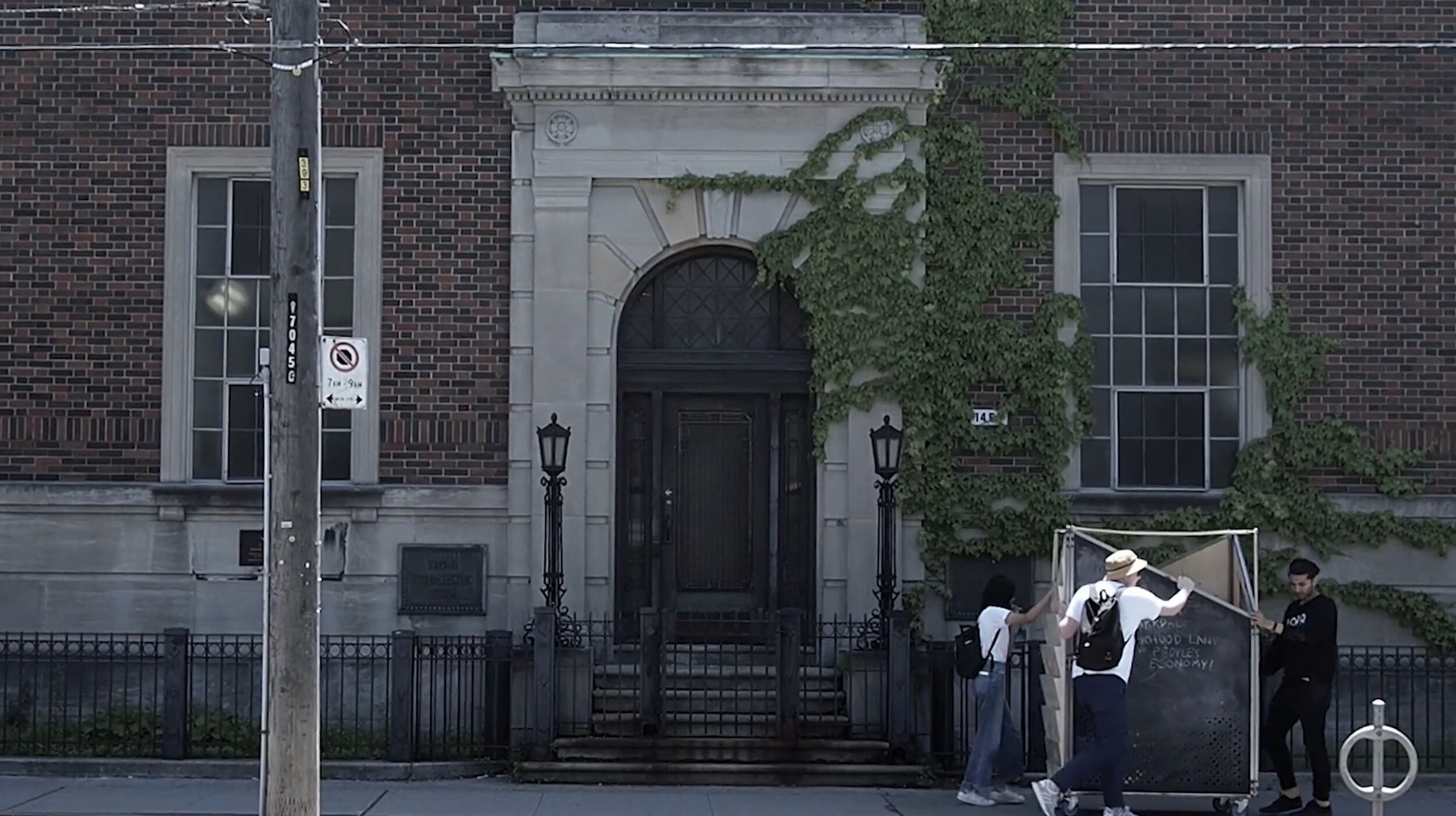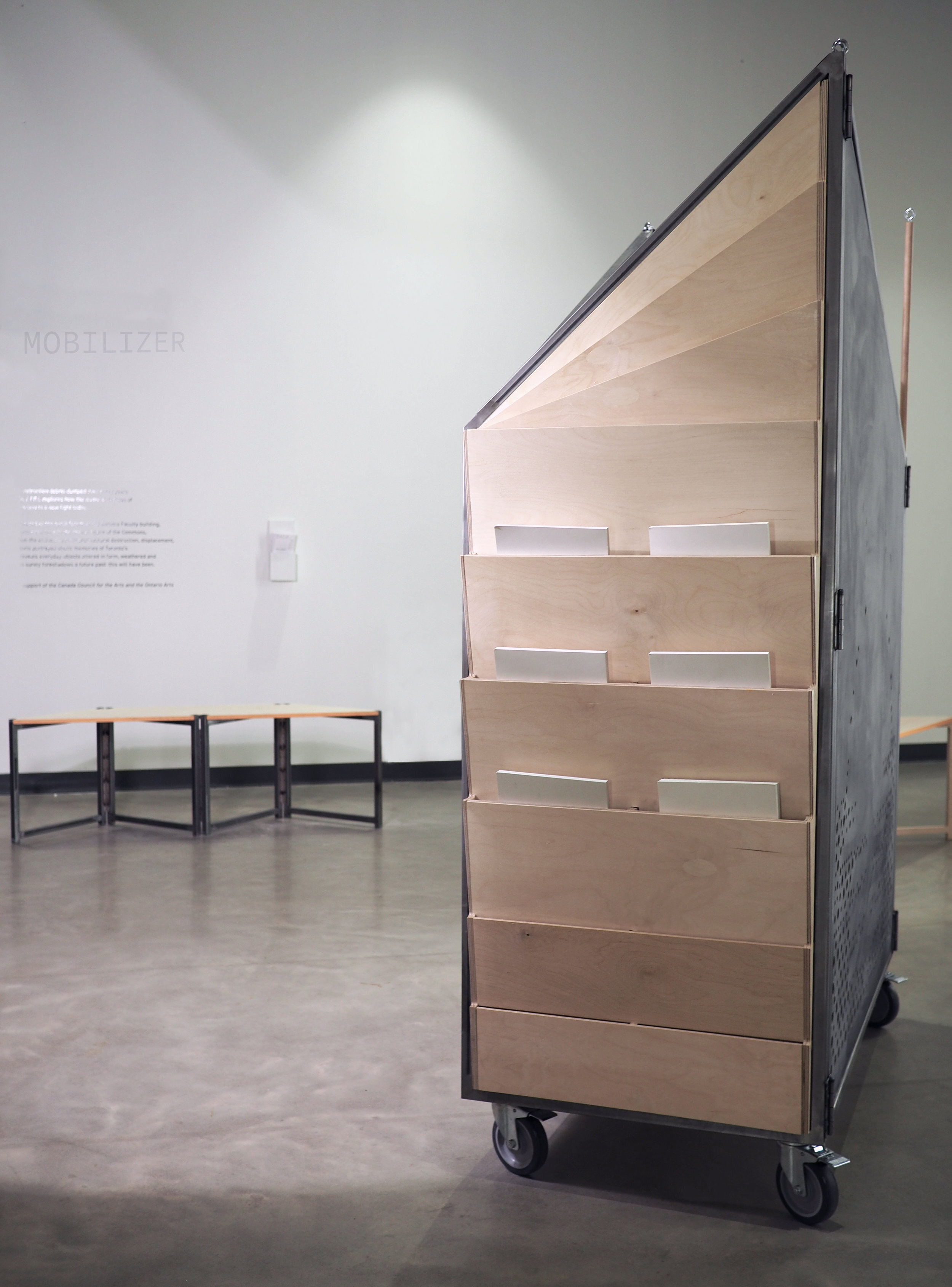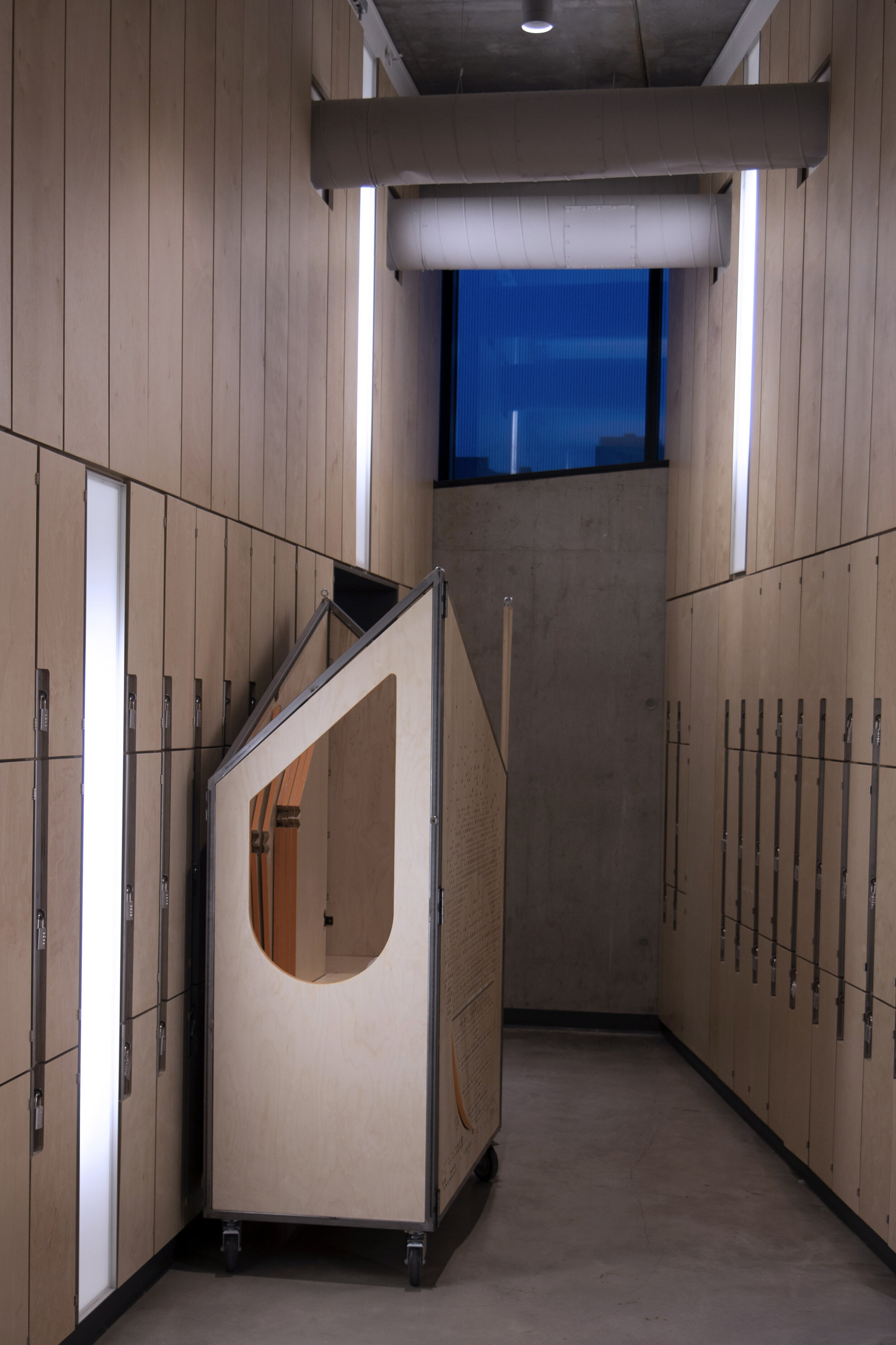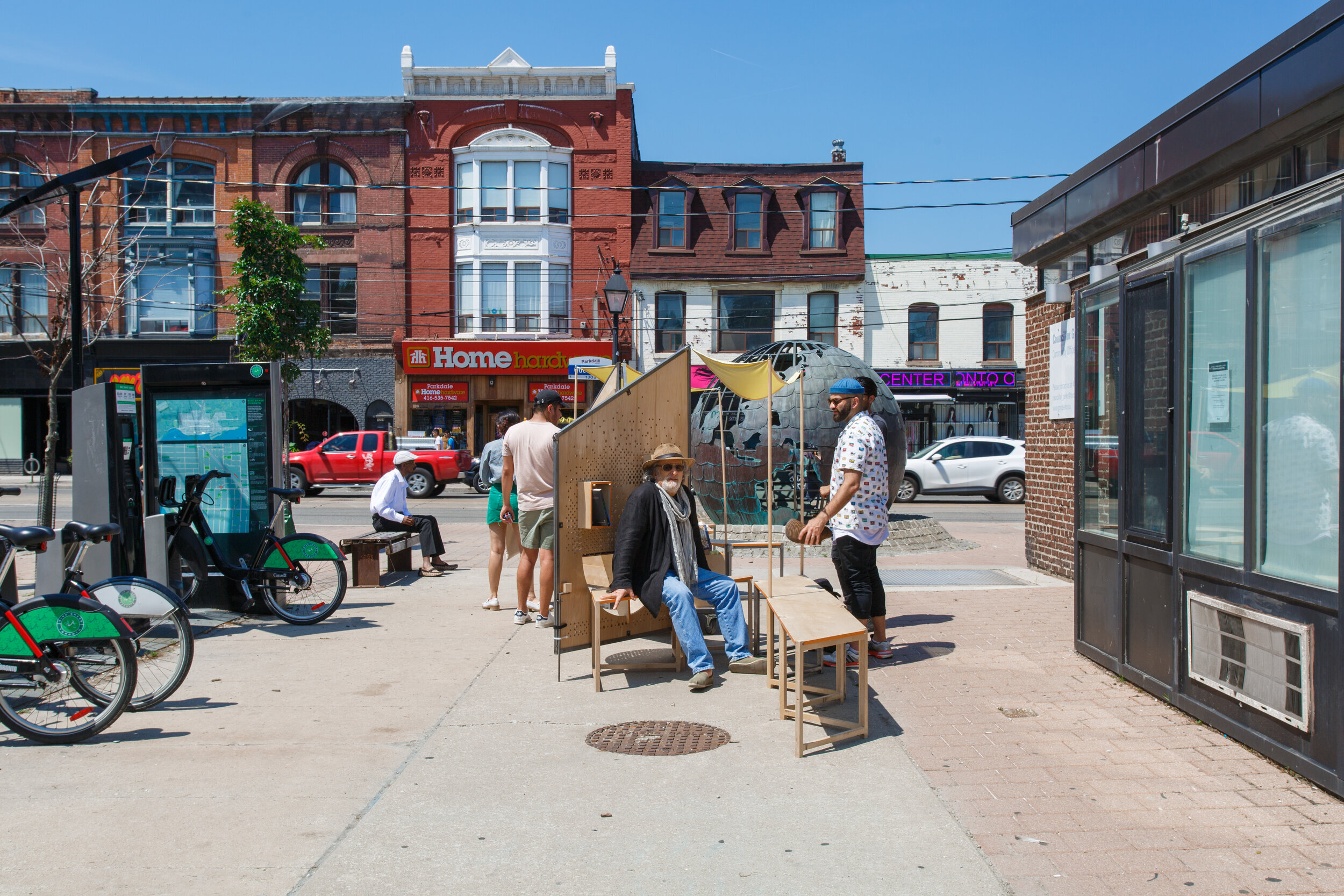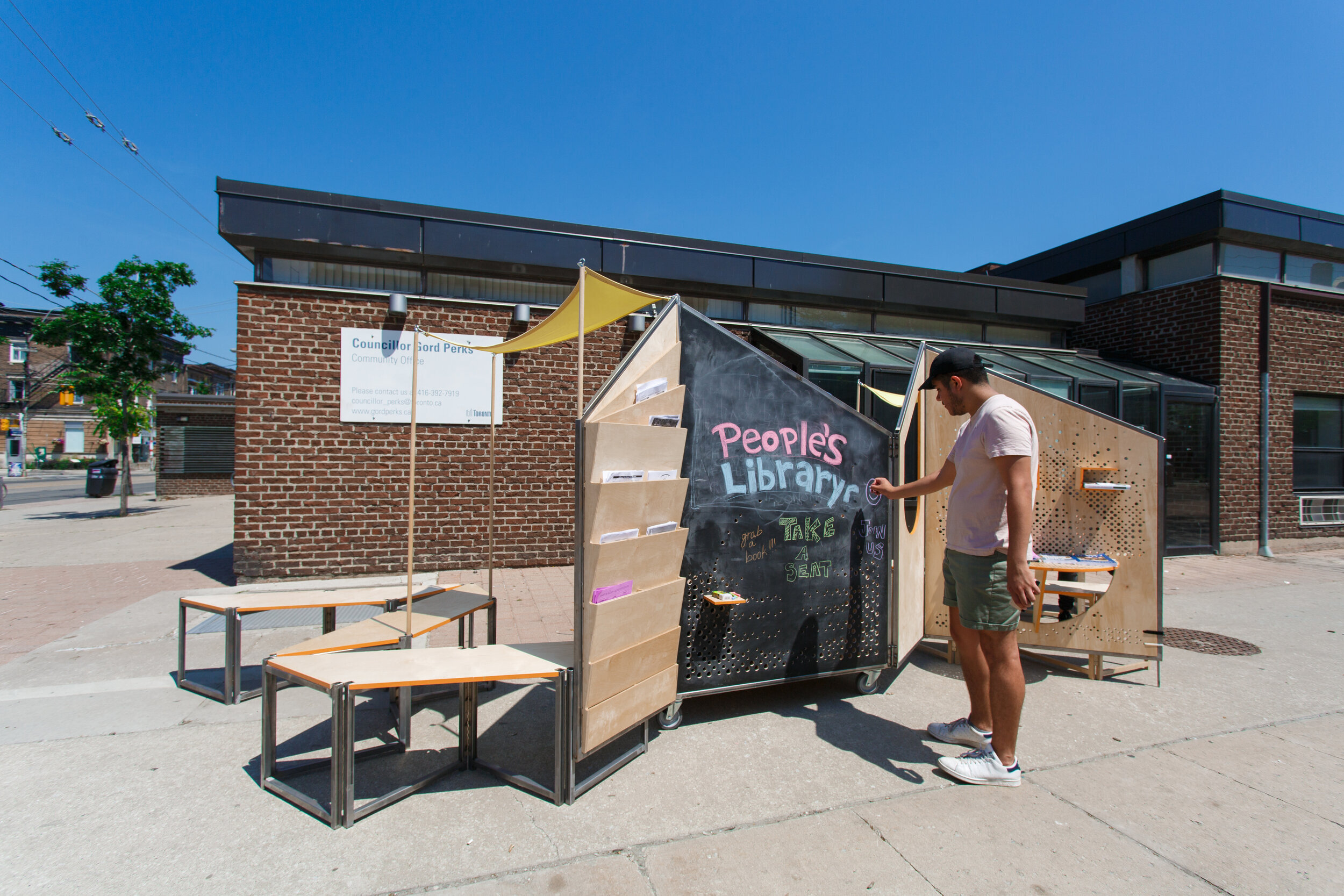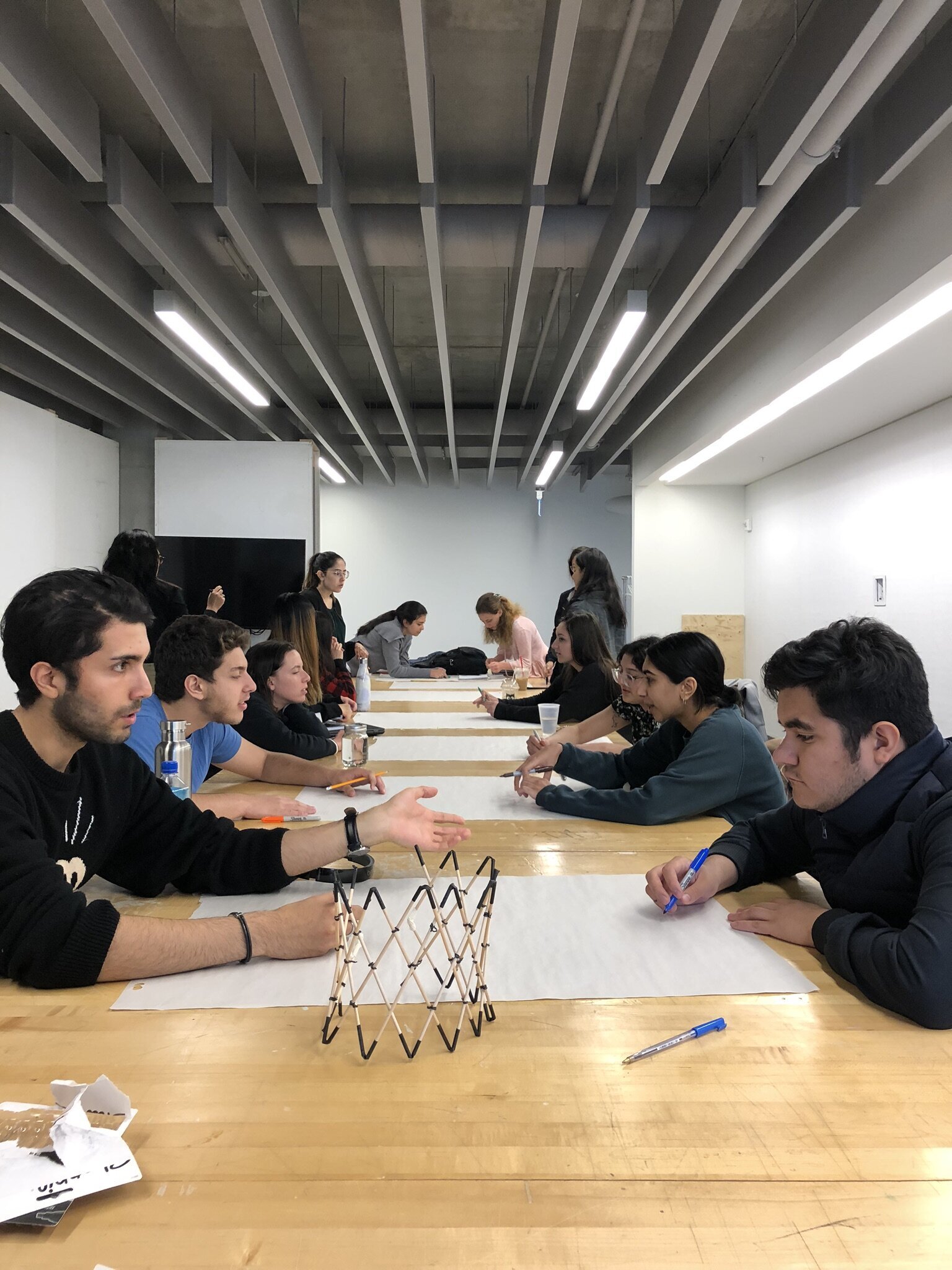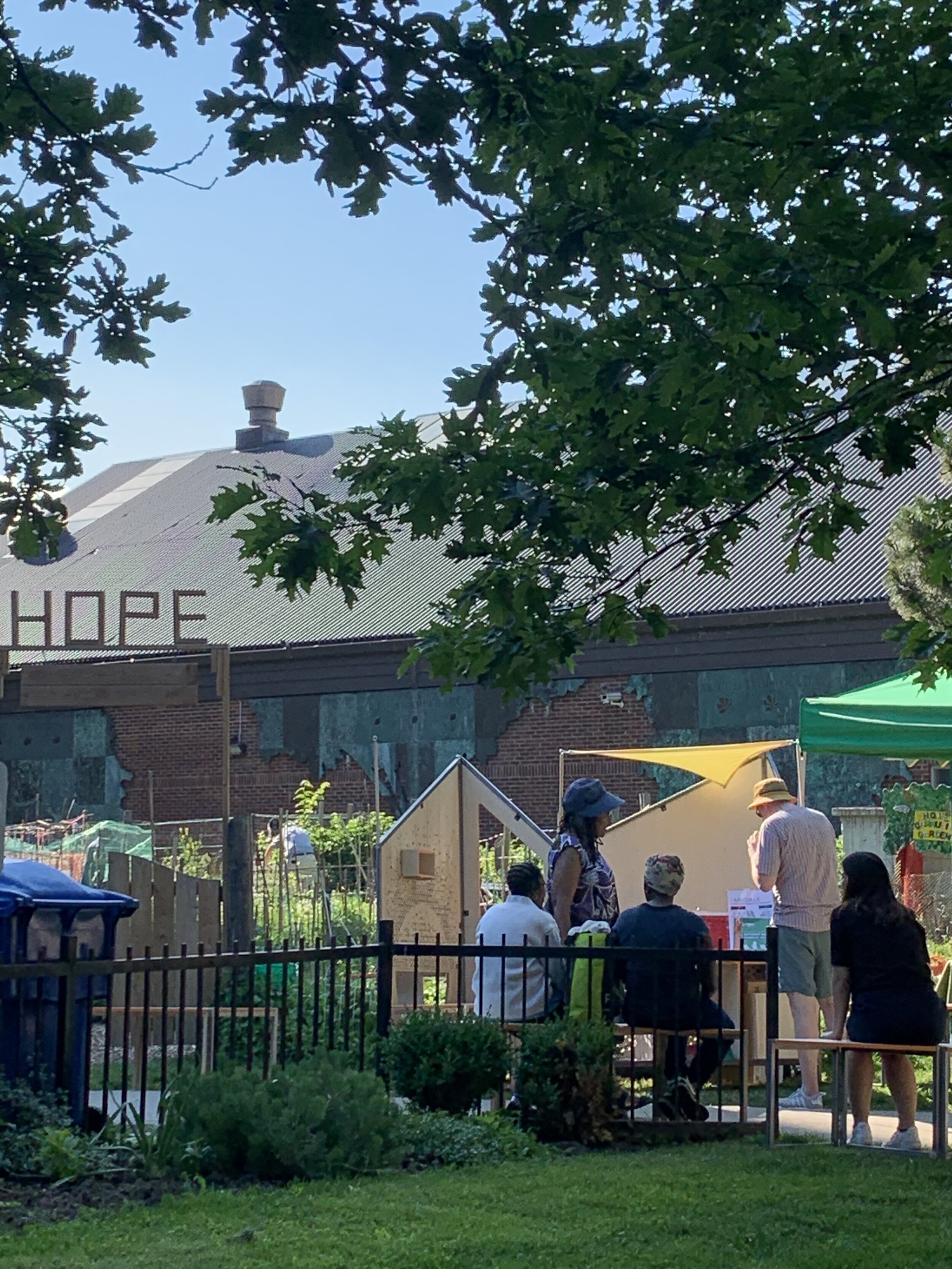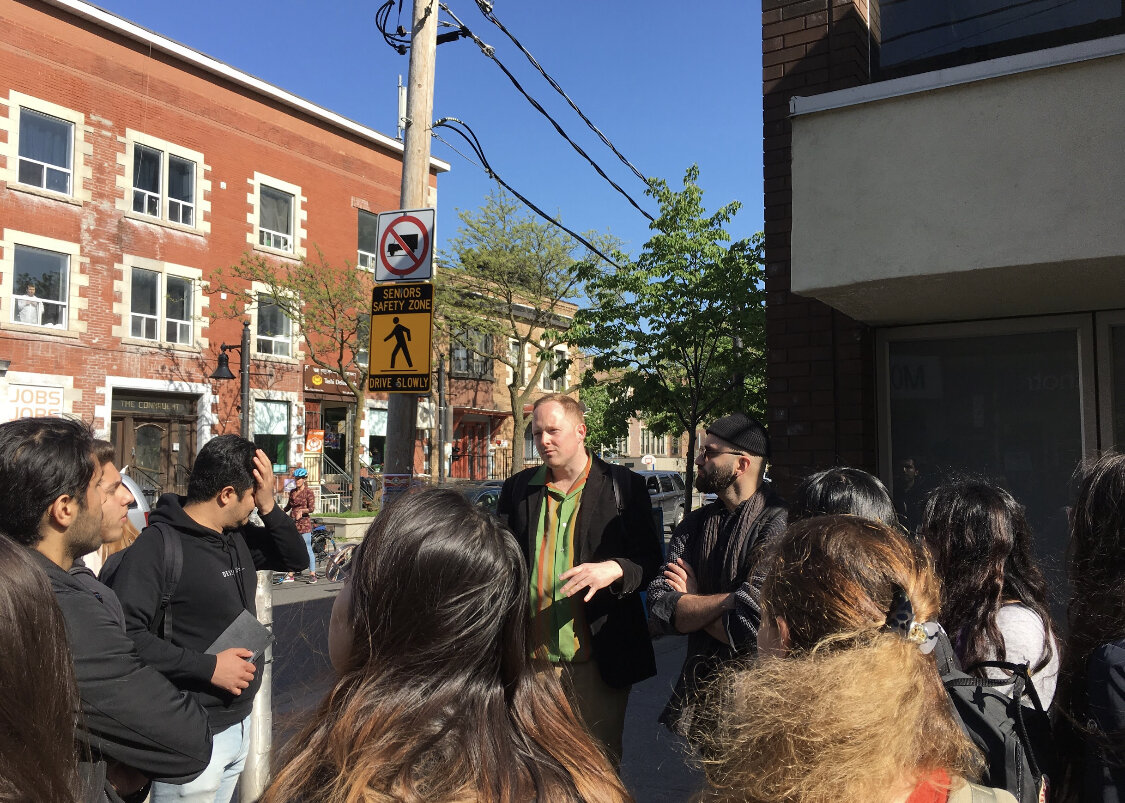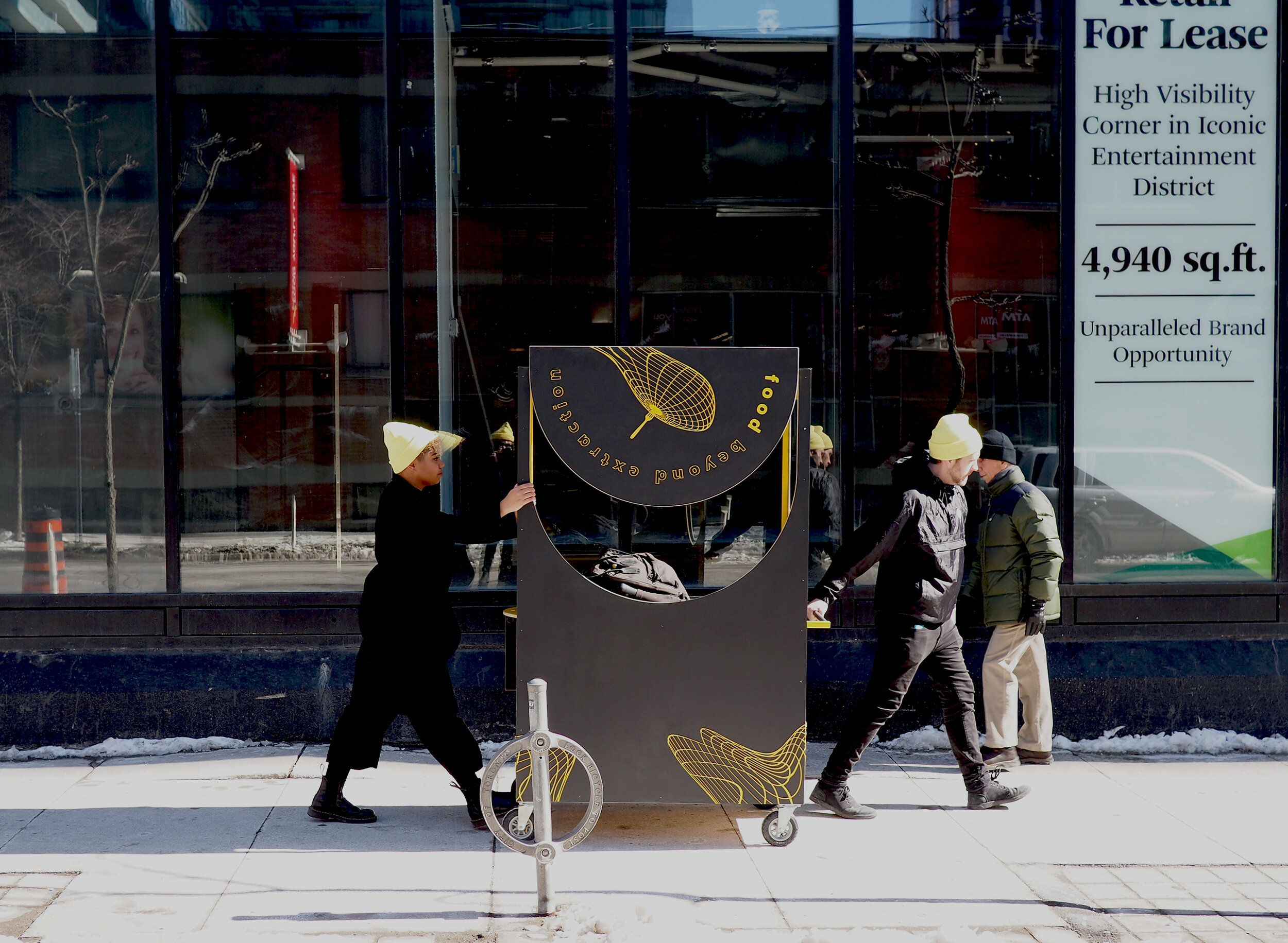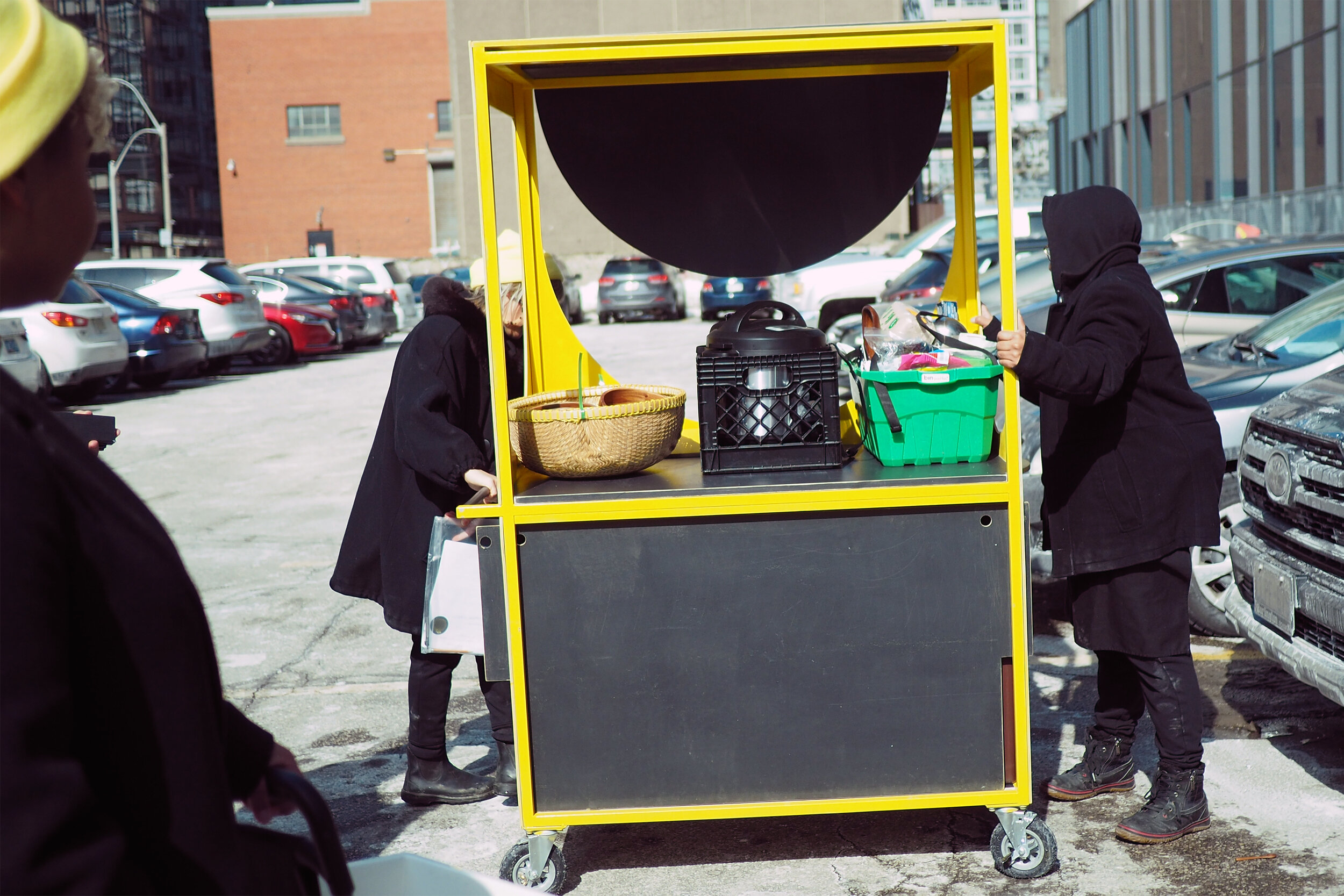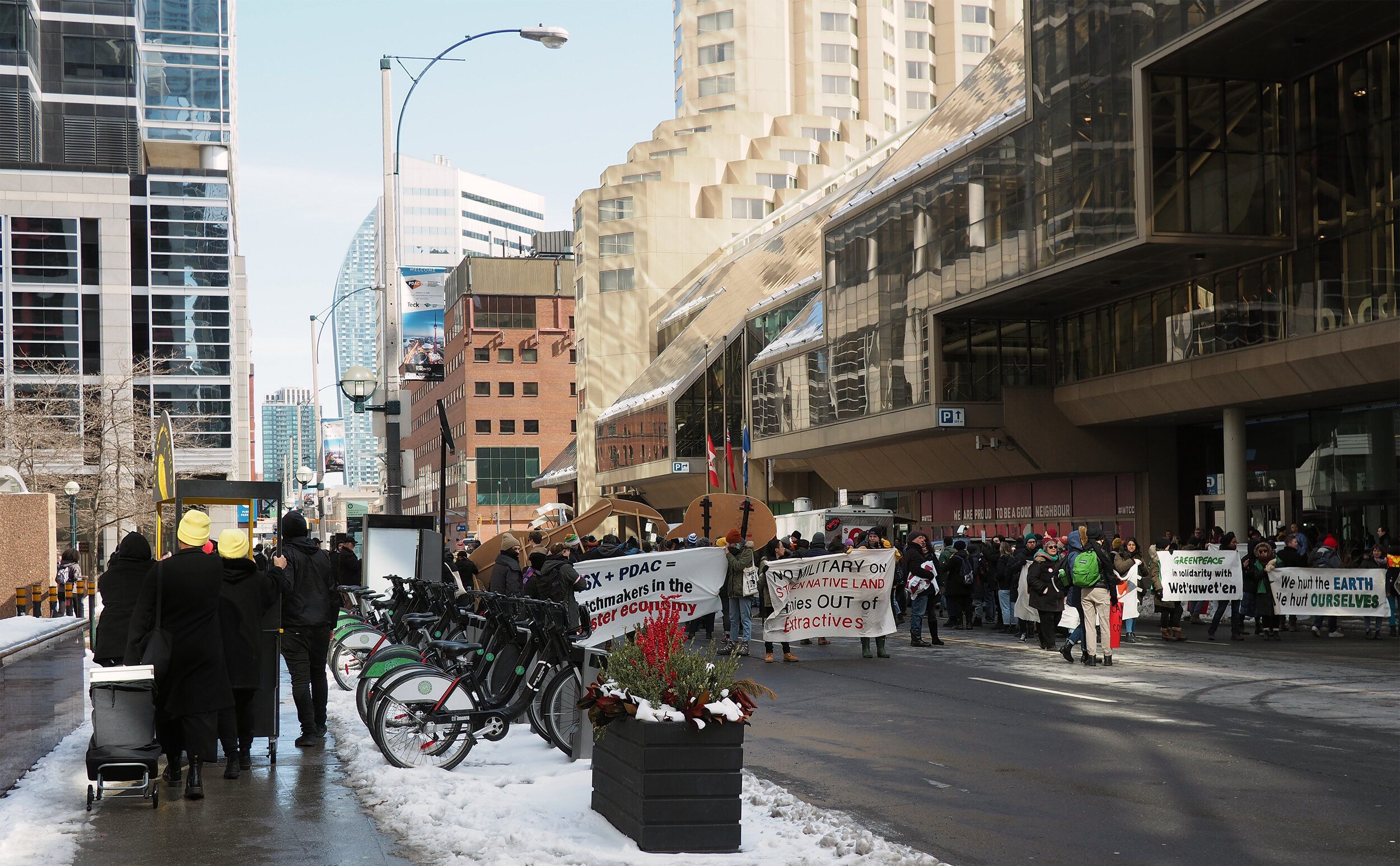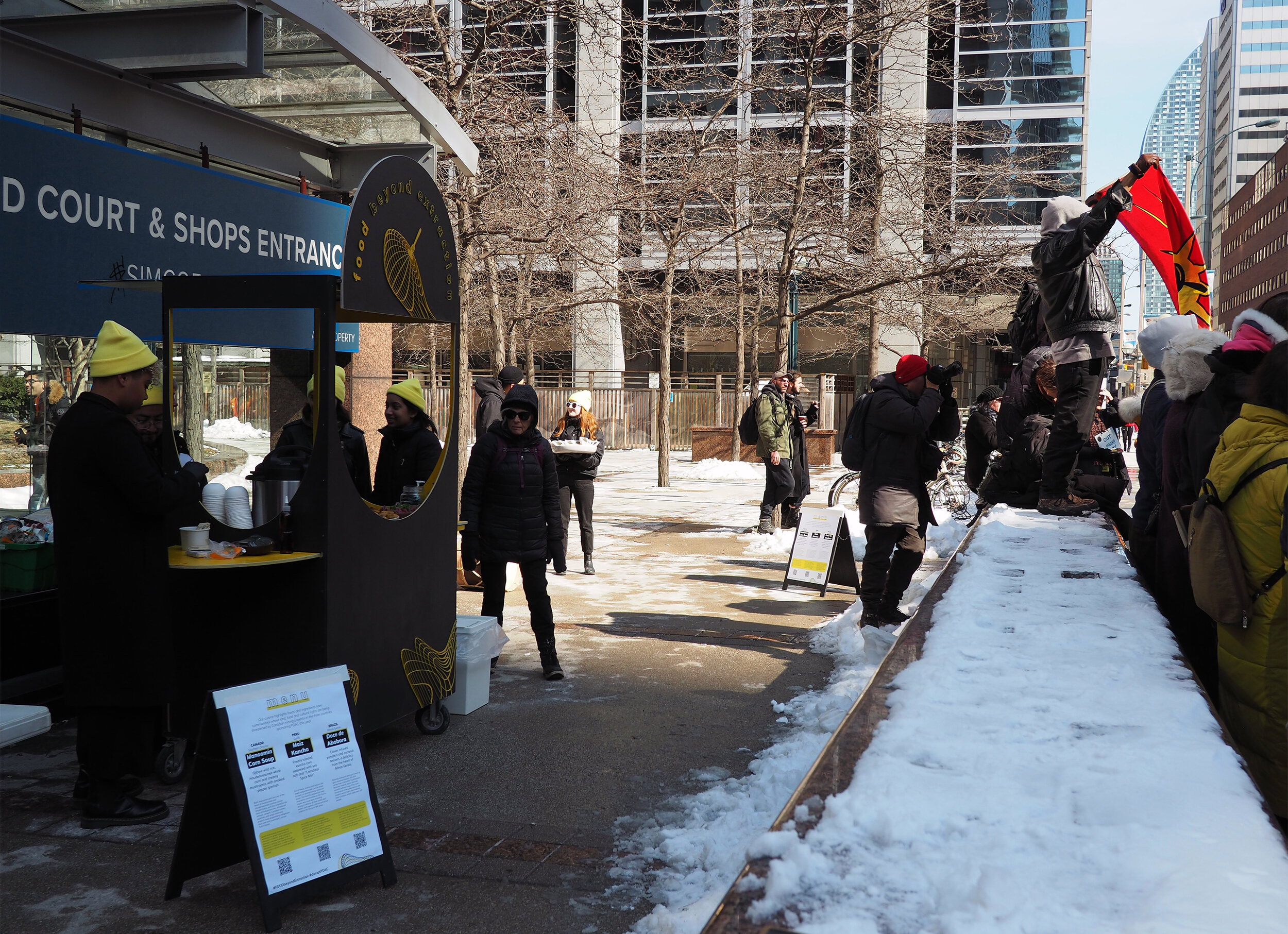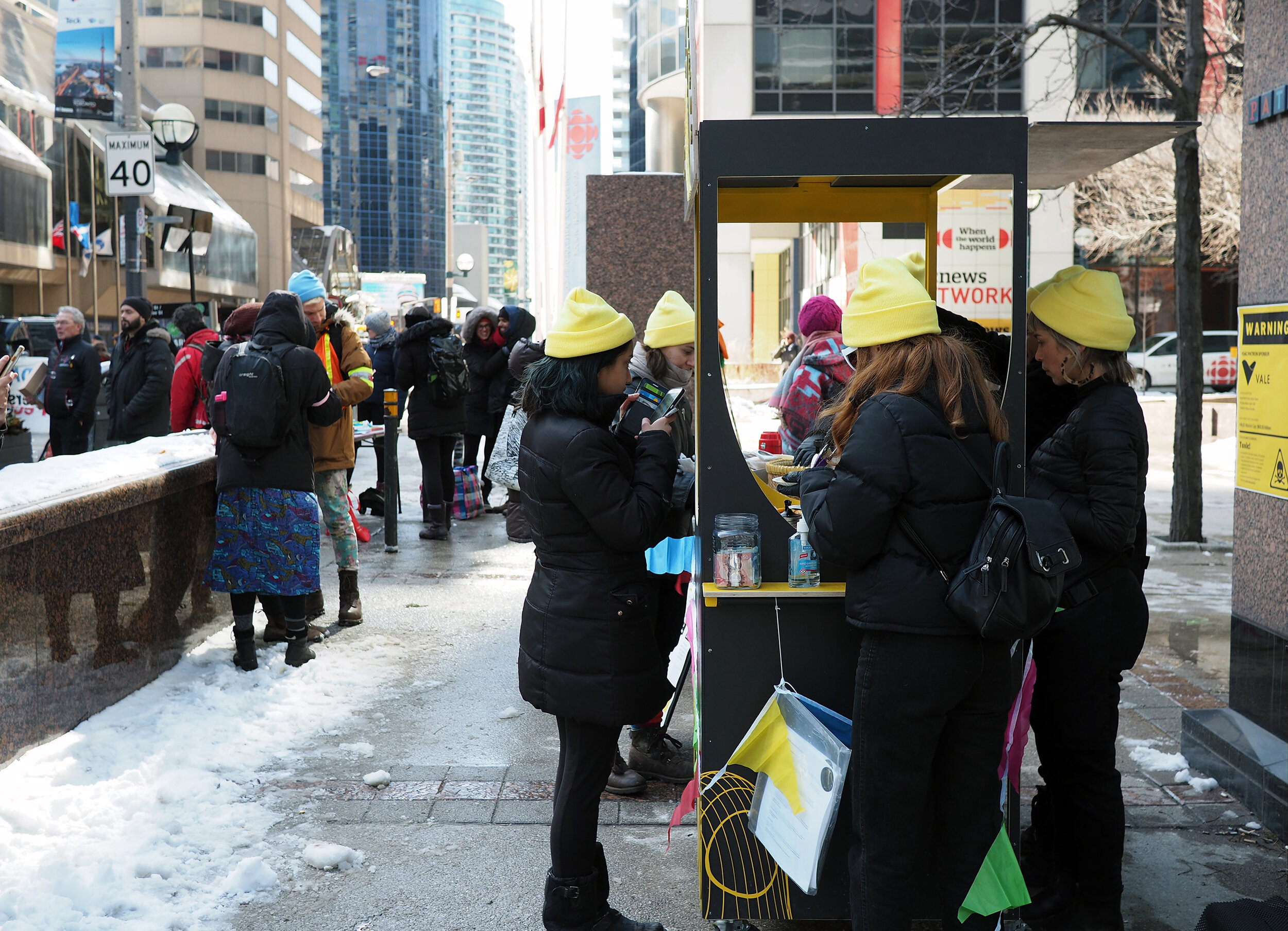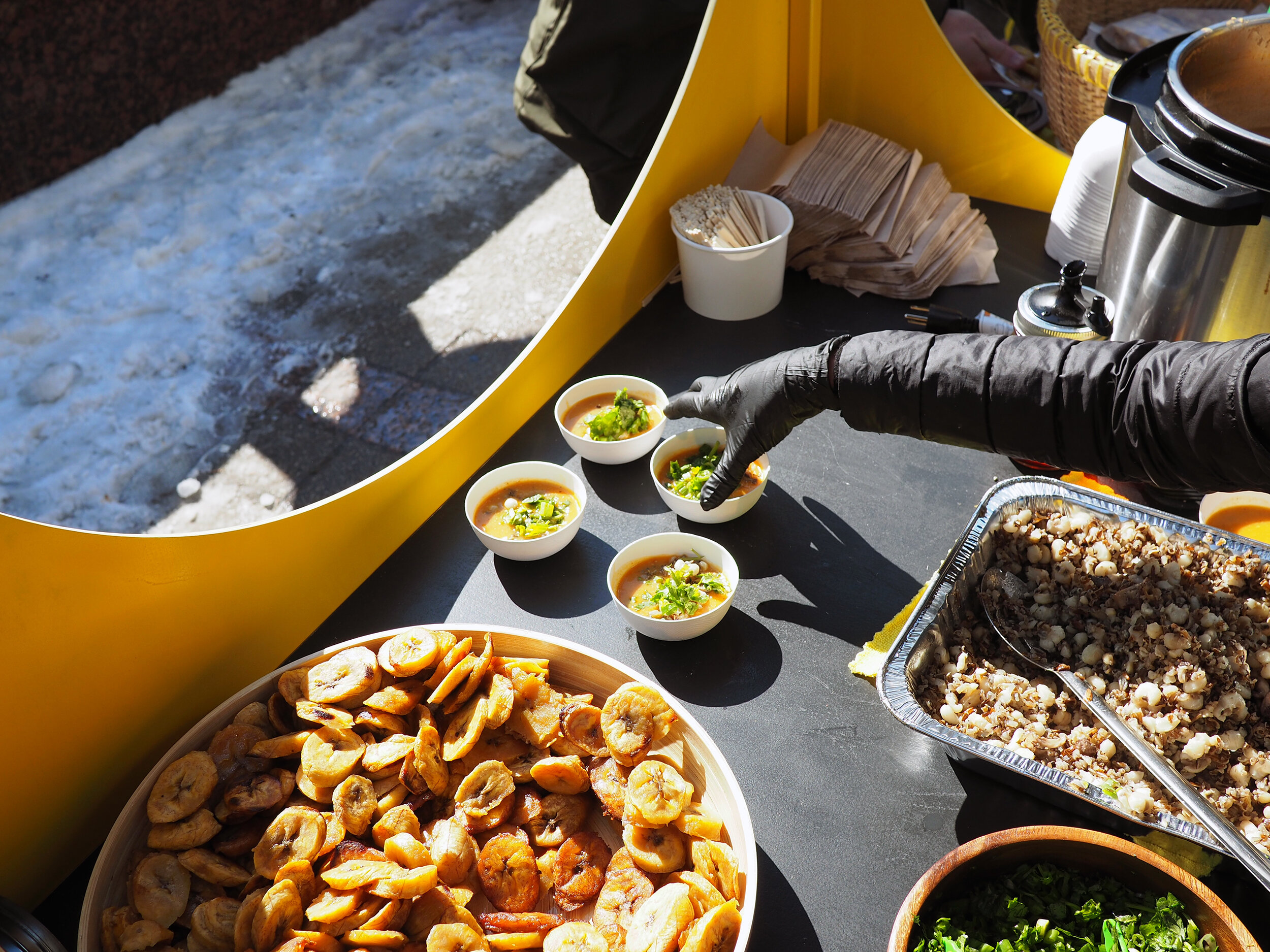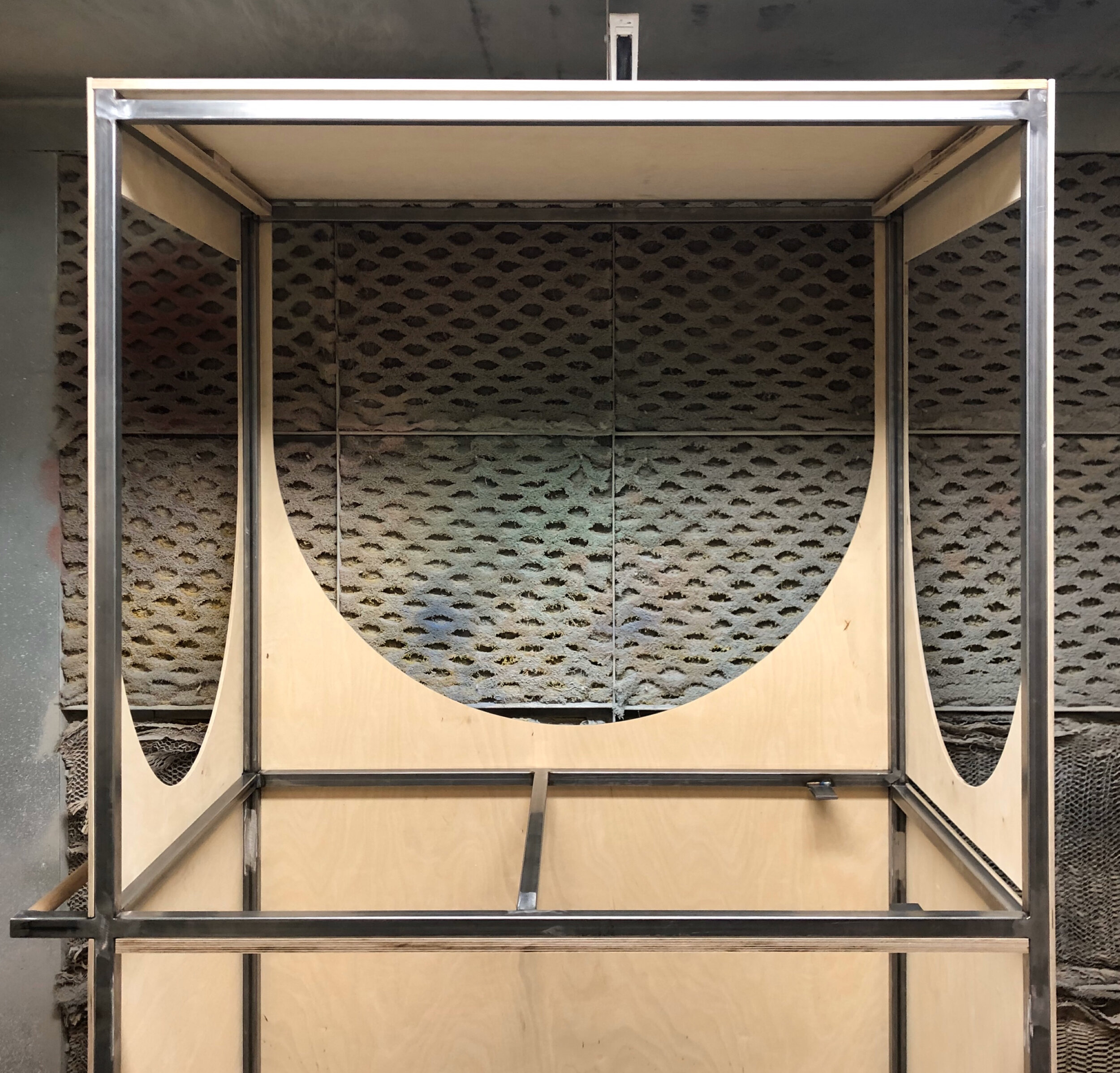Mobile, Mobilize, Mobilizer
What is a Mobilizer?
A Mobilizer is a small mobile piece of architecture designed and built to be able to temporarily occupy public space for various functions.
How has the mobilizer been used by communities in the past and what were the outcomes?
The mobilizers have been used as a mobile library, an outdoor classroom, a stand for a farmer’s market, and a food cart during a demonstration. Depending on the context, they usually tend to fade into the background as a functional piece of architecture, whether it is to provide seating, shelving for books or a counter for food prep. The outcomes have been generally quite positive and I’m continuing to learn from each iteration.
How did it all begin?
The initial thoughts behind the Mobilizer came from a close collaboration with Andrew Winchur - writer, artist, activist & community organizer in Parkdale. In the summer of 2019, we prepared and facilitated a design/build course at UofT’s Daniels Faculty of Architecture, Landscape and Design. Mobilizer 1.0 was built with approx. 15 students during this 2-week intensive course. Our client was Parkdale Neighbourhood Land Trust, so we needed something that was small enough to fit in their office and flexible enough to take up space in an outdoor setting.
The idea grew from there and resulted in Mobilizer 2.0 which was built in collaboration with artist, educator and activist- Dana Prieto - for the Beyond Extraction counter-conference in February 2020.
Mobilizer 3.0 a further collaboration with Andrew Winchur and Homes First is currently in progress, with further iterations hopefully to come.
What’s the advantage of having something mobile?
You can take up space anywhere, mobility adds flexibility.
What’s the point of taking up space?
Public space is never a 100% accessible to everyone. There are always people who may feel uncomfortable, uninvited, unsafe or otherwise uninterested in certain spaces in our cities. Taking up space means to give agency to some of the aforementioned folks to choose how they would like to use their space - in public.
How does taking up space contribute to safety in public space?
If you’re sharing space with a community around you that you feel comfortable with, it usually results in feeling safer in that space. “Safety” is complex, highly nuanced and quite personal. What feels safe to one person, may not feel the same to another, this is why giving agency to the public is important, by allowing them to take up space, which usually results in feeling safer.
How does the mobilizer take up space?
The Mobilizer series are designed collaboratively with the end users. They are meant to be mobile, multi-functional and aesthetically flexible in order to effectively take up space for a variety of functions. The mobilizers act as catalysts that expand and attract beyond their small footprint. The success of each unit could be calculated by the degrees of which it expands spatially and the amount of people it engages.
Another way the mobilizers take up space is when they are being rolled throughout the neighbourhood prior to being deployed in a particular public space. This becomes a performance on its own, a means to acquaint itself with the neighbourhood as onlookers question the motives of the structure. There is something special about this procession through the right-of-way which not only empowers the users, but also engages the public.
Who traditionally takes up public space and how? Who does not?
Typically, those in power ranging from political, corporate and institutional powers are the ones who take up public space. On the other hand, activists are also traditionally known to take up public space - it’s been a proven tactic to disrupt the system as we know it. This leaves out those who aren’t as organized, or as well connected, which makes it harder to take up space. How do smaller grassroots organizations take up space in a system that is generally not set up for them?
Are there examples of communities that might benefit from the Mobilizer in future and what might that look like?
Grassroots community organizations who have a desire to take up public space with an increased visibility could benefit greatly from a Mobilizer. Those who need something more than a simple cart, but a structure which becomes an ingredient in - perhaps a radical - performance or occupying public space. What they look like would depend on the users - the aim is for them to take on a life of their own depending on its context and audience.
What kinds of interactions/engagement can the Mobilizer encourage? What is the relationship between safety and intimacy in these kinds of encounters?
The Mobilizer can encourage more focused and intimate encounters in public space. The aim is to carve out a safe space in a larger public setting, with a structure which is visible, playful and approachable. The Mobilizers are also dependent on the stewards who move, program, deploy and direct the structure in its various phases. Without these stewards, the Mobilizers are inactive - they need people to function and because of this the kinds of encounters will depend on the organizers.
By taking up public space to facilitate learning opportunities, eating as a community and addressing homelessness, for example, a safe space is provided for intimate encounters or conversations in public which might not otherwise occur.
Credits
Mobilizer 1.0
Facilitators: Reza Nik, Andrew Winchur, Angela Cho
Design/Build Team: Aizah Bakhtiyar, Eunice Cheuny, Felipe Coral, Alejandra Cortez Paz, Dennis Fichman, Karen Gebara, Jane Guberman, Hannah Hui, Mehreen Khan, Bella Osterman, Sam Shahsavani, Bhavika Sharma, Sibora Sokolaj, Zainab Wakil
Special thanks to: Daniels Faculty at UofT, Jay Pooley, Tom Abromaitis, Bohden Tymchuk, Aaron Ronan, Josh Sewell, Alex Gaskin, Pablo Espinal Henao, Paul Kozak
Mobilizer 2.0
Collaborators: Dana Prieto, Aemilius Milo Ramirez, Meech Boakye
Design/Build Team: Reza Nik, Dana Prieto, Sam Shahsavani
Special thanks to: Beyond Extraction Collective, Daniels Faculty at UofT, Tom Abromaitis, Aaron Ronan, Paul Kozak
